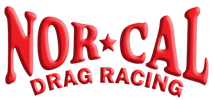By: Jim Bertao, Eagle Field Historian
With the war already raging in Europe, and tensions building in the Pacific, the United States War Department began contracting with civilian flight schools to train pilots for the U.S. Army. Coast Aviation of Palo Alto Cal was one such operator. The principle owners were Harry White, Lex Ehrman and Dick Hyde. They started a school called Mesa Del Rey in King City Cal. in March 1941, and with the entry of the United States into the war, they obtained a contract to build an additional airport and flight school in order to fill the War Departments need for pilots.
A broad, flat desert plain 10 miles south of Dos Palos was chosen as the site for this second facility. This training facility would be called Eagle Field. The ground breaking ceremony was on March 12, 1942 and construction began immediately.
With construction still underway, the first cadet pilots arrived by train from Santa Ana at the railroad station in South Dos Palos, Ca. in June of 1942. They rode to their brand new base on a tram that was used for the 1939 Worlds Fair held on Treasure Island in the San Francisco Bay.
In time there was steam heat and air conditioning in the barracks and offices. A soda fountain, bowling alley, landscaping and a recreation hall made Eagle Field the country club of training bases.
Only a few employees other than the cadets were actually in the Army. The others were civilians working for the contracting corporation. This included the flight instructors who wore regulation Army uniforms and had to march in drill. The civilians worked as mechanics, cooks, gardeners, office workers, fuelers, base security and many other jobs needed to make the base function. Hundreds of people from the local area and from out of town found good jobs and enjoyed working here. It was what they could do to support the war effort.
Ryan PT-22s were the first planes used for training. Cadets were expected to solo after a maximum of 10 hours of dual instruction. If they “washed out” they went back to the walking Army (talk about motivation!). If they succeeded they went on to two more levels of flight training before they were introduced to ACTUAL combat overseas.
As the Allies gained the upper hand in the war effort and enough student pilots were in the pipeline the training contracts were canceled. King City was closed in August 1944 with some personnel transferred to Eagle Field. In December 1944 Eagle Field saw her last cadets. Actual operations lasted 30 months. In those 30 months approximately 5000 pilots graduated from primary training with the loss of only three lives due to accidents. This is considered an excellent record.
Each class held graduation ceremonies and a dance in one of the hangars. Some of the top name bands came to Dos Palos for those dances. The base was used right after the war as an aircraft storage depot and then for many years as a crop duster facility. After the war the city of Dos Palos was to develop Eagle Field as a municipal airport but they failed in their effort. The property reverted to the federal government. In 1980 it was put up for auction. The largest parcel, consisting of both large hangars, runway, administration building, the remaining barracks and the hospital was bought by Mr. Joe Davis of Fresno, California. He has always had a vision of restoring a WWII airfield out of respect for the men and women who won the war, making a home for vintage aircraft and vehicles and giving both their place in history.
-reprinted from eaglefield.net.
About Eagle Field Runway Drags
Rocky Phillips, of Fresno, is the primary person responsible for bringing the races to Eagle Field; however, the event is really a volunteer effort. The events are like races of the 50s and early 60s, and it really takes you back in time to see the old 32′ Ford type hot rods blazing down the runway. For safety purposes Eagle Field keeps the speeds down a bit by running only an 1/8 mile track, versus the 1/4 mile they do at larger venues. Eagle Field’s intent is to keep the races small and simple, as they are not trying to compete with the big boys. Of all the hundreds of drag races held throughout the USA every year, Eagle Field is proud to say that Hot Rod Magazine, the bible of hot rod folks, continues to feature the Eagle Field Drags in some of their issues.
-source edited from eaglefield.net.
